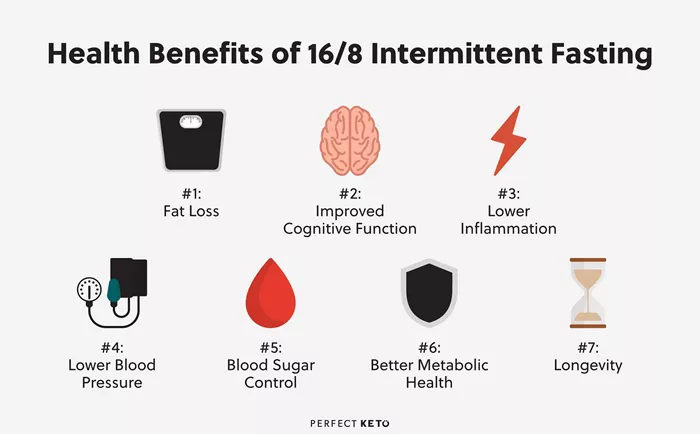In the realm of fitness, the combination of weightlifting and cardio is a topic that often sparks curiosity and debate. Many individuals engage in weightlifting to build strength, increase muscle mass, and enhance overall physical appearance. On the other hand, cardio exercises, such as running, cycling, or swimming, are renowned for their cardiovascular health benefits, including improved heart function, enhanced endurance, and calorie burning. When it comes to optimizing fitness goals, determining the appropriate amount of cardio to do after weightlifting is crucial. This article aims to provide a comprehensive and professional guide on this topic, exploring various factors that influence the decision and offering practical recommendations.
Understanding the Goals
Muscle Building
If the primary goal is muscle building, the focus during weightlifting should be on progressive overload, targeting specific muscle groups, and allowing sufficient recovery time. In this case, excessive cardio immediately after weightlifting may interfere with muscle growth. Cardio exercises, especially high – intensity ones, can increase cortisol levels. Cortisol is a stress hormone that, in high amounts, can break down muscle protein, potentially counteracting the muscle – building efforts of weightlifting. For muscle building, it may be more beneficial to limit cardio after weightlifting to low – intensity, steady – state activities, such as a 10 – 15 minute leisurely walk. This can help with blood flow to the muscles, aiding in recovery, without causing significant muscle catabolism.
Fat Loss
When the goal is fat loss, both weightlifting and cardio play important roles.
Weightlifting helps increase muscle mass, which in turn raises the basal metabolic rate, allowing the body to burn more calories at rest. Cardio, on the other hand, directly burns calories during the exercise. After weightlifting, incorporating 20 – 30 minutes of moderate – intensity cardio, such as jogging or cycling at a pace where you can still hold a conversation but are breathing harder, can be effective for fat loss. High – intensity interval training (HIIT) can also be a great option. For example, a 15 – minute HIIT session consisting of 30 – second bursts of intense exercise (like sprinting or jumping jacks) followed by 60 – second periods of rest can maximize calorie burn and continue to elevate the metabolic rate even after the workout.
Cardiovascular Health
For those aiming to improve cardiovascular health, a combination of weightlifting and cardio is essential. After weightlifting, engaging in 30 – 60 minutes of moderate – to – high – intensity cardio, such as running, swimming, or using an elliptical machine, can significantly improve heart function, increase lung capacity, and reduce the risk of heart diseases. This type of cardio workout challenges the cardiovascular system, making the heart stronger and more efficient at pumping blood throughout the body.
Factors Affecting the Amount of Cardio
Fitness Level
An individual’s fitness level is a key factor in determining how much cardio to do after weightlifting. Beginners may find it more challenging to combine intense weightlifting and cardio in the same session. For beginners, starting with 10 – 15 minutes of light cardio, like a slow walk on an inclined treadmill, after a weightlifting session can be a good way to gradually build endurance. As fitness levels improve, the duration and intensity of the cardio can be increased. Intermediate and advanced fitness enthusiasts may be able to handle 30 – 45 minutes of more intense cardio, such as interval training on a stationary bike, after a weightlifting workout.
Time Constraints
Time is often a limiting factor in many people’s fitness routines. If time is scarce, it may be necessary to prioritize either weightlifting or cardio. However, if both are important, a shorter, more intense cardio session can be beneficial. For example, a 10 – minute HIIT routine can be squeezed in after a weightlifting session, providing a good cardiovascular workout in a relatively short amount of time. On the other hand, if more time is available, a longer, moderate – intensity cardio session of 30 – 60 minutes can be incorporated to enhance overall fitness.
Energy Levels
Weightlifting can be physically demanding, and energy levels after a weightlifting session can vary. If an individual feels completely exhausted after weightlifting, attempting a high – intensity cardio workout may not be advisable. It could lead to poor form during cardio, increasing the risk of injury, and may also over – stress the body. In such cases, a light, 10 – 15 minute cool – down walk or gentle cycling can be a better option. Conversely, if energy levels are still relatively high after weightlifting, a more intense cardio session can be pursued.
Type of Weightlifting
The type of weightlifting performed also affects the choice of cardio. For example, if the weightlifting session focuses on heavy compound movements like squats, deadlifts, and bench presses, which engage multiple muscle groups and are more physically taxing, less intense cardio may be appropriate. A 15 – 20 minute session of low – impact cardio, such as using a rowing machine at a moderate pace, can help with recovery. On the other hand, if the weightlifting session is more focused on isolation exercises for smaller muscle groups, and the overall intensity is lower, a more intense cardio workout can be added.
Types of Cardio Exercises
Low – Intensity Steady – State (LISS)
LISS cardio exercises, such as walking, slow cycling, or gentle swimming, are great options after weightlifting, especially for muscle recovery and those new to exercise. These exercises increase blood flow to the muscles, delivering oxygen and nutrients that aid in the repair and growth of muscle fibers. LISS cardio also helps to reduce muscle soreness. For example, a 20 – 30 minute walk at a comfortable pace can be an ideal way to cool down after a weightlifting session. It is easy on the joints and can help the body transition from the intense weightlifting activity to a more relaxed state.
High – Intensity Interval Training (HIIT)
HIIT involves short bursts of intense exercise followed by periods of rest or low – intensity activity. Examples include sprint intervals, burpee – rest intervals, or mountain climber – rest intervals. HIIT is excellent for fat loss and improving cardiovascular fitness. After weightlifting, a 15 – 20 minute HIIT session can be highly effective. For instance, a routine could consist of 30 seconds of all – out sprinting on a treadmill followed by 90 seconds of slow walking, repeated for 10 – 15 rounds. HIIT not only burns calories during the workout but also continues to burn calories in the hours after the workout, known as the after – burn effect or excess post – exercise oxygen consumption (EPOC).
Moderate – Intensity Continuous Training (MICT)
MICT, such as jogging, cycling at a moderate pace, or using an elliptical machine, is a balanced option for cardio after weightlifting. It provides a good cardiovascular workout without being overly intense. For those aiming for general fitness, fat loss, or improved endurance, 20 – 40 minutes of MICT after weightlifting can be beneficial. For example, jogging at a pace where you can talk in short sentences but are breathing steadily for 30 minutes can help strengthen the heart and lungs while also burning calories.
Recommended Guidelines
General Recommendations
Muscle Building: If muscle building is the primary goal, limit cardio after weightlifting to 10 – 15 minutes of low – intensity steady – state cardio, such as a slow walk or gentle cycling. This can be done 2 – 3 times a week, preferably on non – consecutive days to allow for muscle recovery.
Fat Loss: For fat loss, aim for 20 – 30 minutes of moderate – intensity cardio, such as jogging or cycling, or 15 – 20 minutes of HIIT after weightlifting, 3 – 4 times a week. This can be combined with a proper diet to create a calorie deficit for effective fat loss.
Cardiovascular Health: To improve cardiovascular health, engage in 30 – 60 minutes of moderate – to – high – intensity cardio, like running, swimming, or using an elliptical machine, after weightlifting, 3 – 5 times a week.
Conclusion
Determining how much cardio to do after weightlifting depends on a variety of factors, including fitness goals, fitness level, time constraints, energy levels, and the type of weightlifting performed. By understanding these factors and choosing the appropriate type and duration of cardio, individuals can optimize their fitness routines. Whether the goal is muscle building, fat loss, or improved cardiovascular health, a well – planned combination of weightlifting and cardio can lead to significant improvements in overall physical fitness and well – being. It is also important to listen to the body, gradually increase the intensity and duration of workouts over time, and ensure proper nutrition and rest for optimal results. Remember, consistency is key in achieving long – term fitness success.
Related topics:
15 Best Anaerobic Exercises For Weight Loss



































